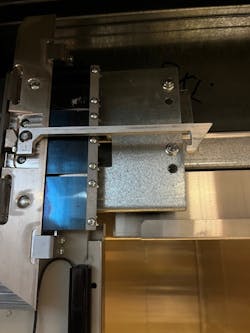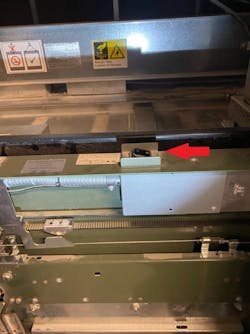With a steady increase in the development and construction of multilevel residential and commercial occupancies, locating the elevator power supply has become a challenge for routine elevator rescue calls. This is unlike in the past, when the machine room was on the top or bottom of traction elevators or close to the base of a hydraulic elevator.
Further contributing to the challenge is the emergence of numerous new elevator companies, all of which have different types of elevators.
As well, there are today’s MRL (machine room-less) elevators, which have all of the equipment inside of the elevator shaft. Builders like this option, because they don’t need a designated room for elevator equipment, which otherwise would eat into the high value that they can obtain for each square foot of rentable space.
Where are the breakers?
Just searching in a building can be difficult, because most mechanical and electrical rooms are locked from public access. Therefore, of course, having keys to the building is very important. Fire departments’ best resource is a building manager or maintenance employee. However, at, say, 3:00 a.m., seldomly are they available. An emergency key box is a good solution for ensuring that responders have the necessary building key access and elevator keys for middle-of-the-night rescues. Unfortunately, most elevator companies aren’t forth coming with the elevator key, because they want to be paid for a service call.
We have found elevator supply breakers in main buildings’ electric room, in a subpanel on a random floor and on the top floor that the elevator serves. The elevator supply breakers for some Kone and Otis MRLs are on an access panel that’s on the door jamb that’s on the top floor that the elevator serves.
Inside of the panel are the circuit breakers for the car lights and fan and the elevator motor—just like what you find in an older machine room. The interior of the panel also might include a reset button and the manual controls, which an elevator technician would use for elevator inspections.
The Otis Hydrofit hydraulic MRL fits all working components in the hoist way. A door that’s on the side or back of the hoist way provides access to the mechanical parts and controls, including breakers for the car light and fan and the elevator motor.
TKE’s Endura hydraulic MRLs also have the access panel on the door jamb of the hoist way. However, the location of the access panel is on the second floor that the elevator serves.
The advantages to responders of the main breaker being located in an elevator’s access panel are the ability to shut off power locally and minimize reconnaissance time.Door restrictors
Door restrictors also can present a challenge to an elevator rescue.
The door restrictor on an elevator is a latch to keep the elevator car door from being opened by a passenger(s) while the elevator is between floors. This was required in the 1980s as a standard safety feature, and all of the elevators from a time before that should be retrofitted with them.
Firefighters will know that an elevator has a door restrictor when they start to open the elevator car door and it stops.
The latch is ether a simple mechanical latch, a restrictor plate or an electric solenoid that’s operated by sensors.
Some elevator door motors might have a built-in safety that will try to reclose the car door if an attemmpt is made to force it open. A switch that’s on the top of the door can be turned off to disable that function.
All this said, it’s important to remember that just when you believe that you have seen all of the types of door restrictors, you might run into a different one, and it might take you time to figure out how to navigate the unfamiliar territory. The bottom line is that firefighters shouldn’t have to force the hoist way or car doors to complete a rescue.Elevator rescue basics
Consider these basic steps when you go on an elevator rescue call: locate the caller; locate building management or a maintenance employee; confirm that the elevator technician was called and, ideally, is on the way, and, if so, how long will it take for that individual to arrive; locate the stuck elevator; identify the floor of the stuck elevator; establish contact with the trapped occupant(s); inquire as to whether a trapped occupant is experiencing a medical emergency, which could play a significant role in how quickly the rescue must be accomplished.
More calls
Elevator calls are becoming more common. For example, in 2018, the Columbus, OH, Division of Fire took 218 elevator rescue calls. As of press time, the department took 566 calls in 2022. However, elevators are dangerous machines, and elevator rescues range from extremely simple to complex. When possible, wait for an elevator technician to arrive.
Information Gathering
Building walk-throughs and preplanning are excellent ways to become familiar with a building and its elevators before getting an elevator rescue call.
A list of preplan items should include but not be limited to:
• Find electrical rooms and power supply for elevators
• For traction or hydraulic elevators, find the elevator machine room
• For machine room-less (MRL) elevators, find access to the control panel
• Necessary keys for elevator control panel and electric and machine rooms
• Identify/become familiar with the kind of door restrictors and how to overcome them
• Does elevator require a key fob or key card to access certain floors?
When Rescue Is Necessary
When an elevator technician isn’t available, consider the following rescue options:
• Fire service Phase 1
• Reset in elevator controls, push reset button or turn off power for 30 seconds then turn back on
• Hoist way door rescue
• Technical rescues through top of the elevator car
When a hoist way door rescue is necessary:
• Shut off the elevator
• Open the hoist way door
• Open the elevator car door
About the Author

Nelvin Young
Nelvin Young began his fire service with the Columbus, OH, Fire Department in 1991, spending most of his career on Ladder 1/Ladder 23. He is a member on the department’s Ladder Committee, having served on tractor-drawn aerials and mid-mount platforms. Young is an Ohio Certified Fire Instructor for the State Fire Academy and serves as a fire instructor for the Columbus Training Academy. He is an expert in aerial operations, tilling and general truck operations and is a rescue technician.


